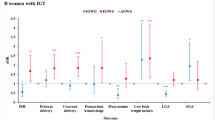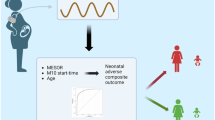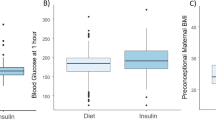Abstract
Summary: The glucose turnover rate (GTR) has been determined in conscious pregnant guinea pigs from 33–63 days of gestation. Eighteen animals were studied, using a constant infusion technique of trace amounts of 6-[3H]-glucose and U-[14C]-glucose. The GTR 6-[3H] (mg · min-1) increased progressively with gestation. At term the value is approximately 2-fold higher than in the nonpregnant females. The weight specific GTR 6-[3H] (mg · min-1 · kg-1) did not change significantly with gestation. The % of [14C] recycling increased from 0% at 40 days gestation to 20% at term.
As with GTR, the metabolic clearance of glucose (ml · min-1) increased with gestational age and exceeded the clearance in nonpregnant animals after 50 days of pregnancy. Expressed per kg of body weight, the metabolic clearance of glucose was not significantly different in pregnant and nonpregnant animals.
Speculation: At term, in the pregnant guinea pig, the fetal mass can equal 50% of the maternal prepregnancy weight. Because glucose is an important substrate for the conceptus, the enormous fetal mass could be expected to have a significant impact upon maternal rate of glucose production. These studies suggest that this weight specific glucose utilization rate of the guinea pig conceptus is not substantially higher than that of the maternal tissues.
Similar content being viewed by others
Log in or create a free account to read this content
Gain free access to this article, as well as selected content from this journal and more on nature.com
or
Author information
Authors and Affiliations
Rights and permissions
About this article
Cite this article
Gilbert, M., Sparks, J., Girard, J. et al. Glucose Turnover Rate during Pregnancy in the Conscious Guinea Pig. Pediatr Res 16, 310–313 (1982). https://doi.org/10.1203/00006450-198204000-00014
Issue date:
DOI: https://doi.org/10.1203/00006450-198204000-00014
This article is cited by
-
Glucose metabolism in the mother and the newborn infant
The Indian Journal of Pediatrics (1991)



